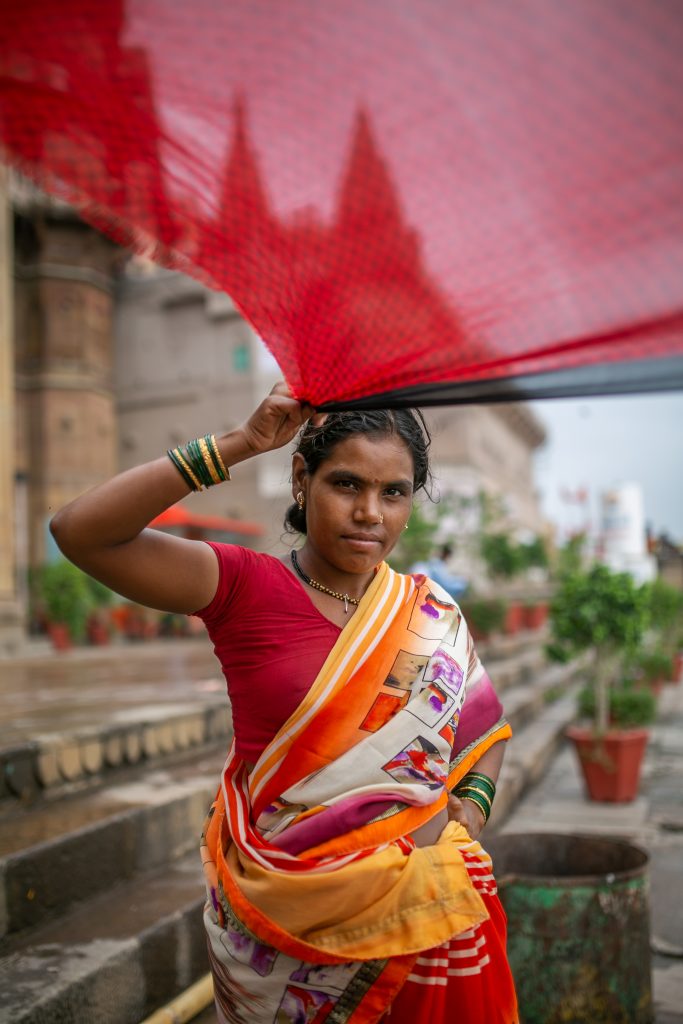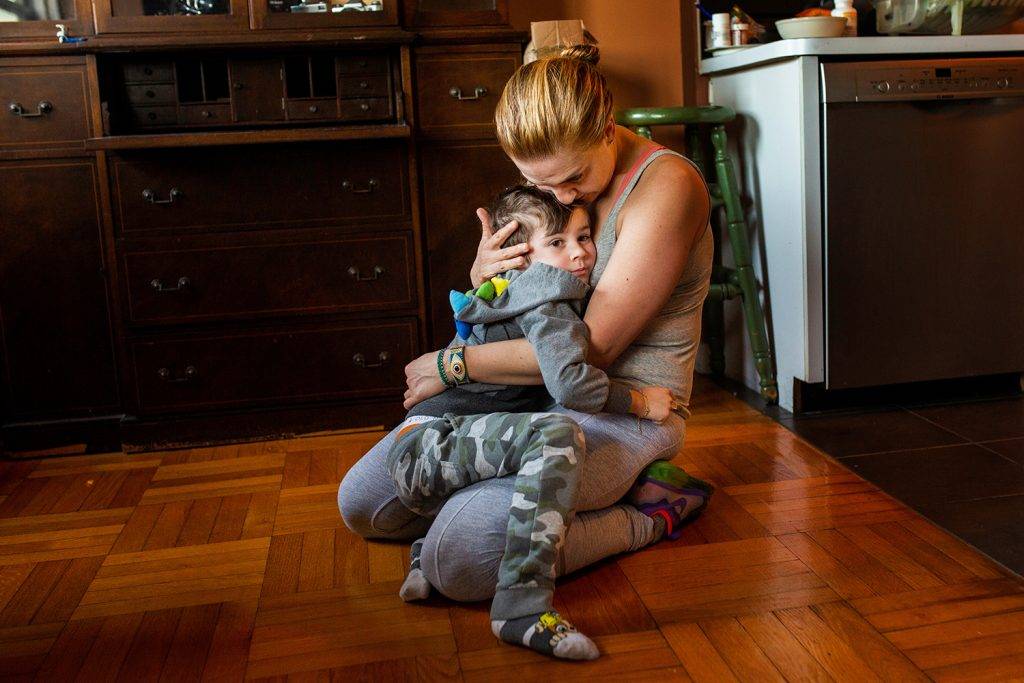“I think self-doubt and self-criticism that comes with being a part of an artist can be really overwhelming. Putting your work out there comes with anxiety, I don’t think we talk about it enough. I think it’s a courageous act putting a part of yourself out there through your art. It took me time to realize and understand these things.”
Roshni Khatri is a storyteller, photographer and feminist. Born and raised in New Delhi in India, her father is a businessman and her mother is a homemaker. “Like most Asian households,” she says, she was expected to become a doctor or a lawyer so she could have a stable life and a career.
“Nobody even in the whole of my family or their social circle has ever been even involved in creating art,” she says. After a while, her parents were convinced enough to let her pursue her passion and have been supportive of her decisions since then. Khatri completed her Bachelor’s Degree in Mass Communication from the University of Delhi then moved to Mumbai to work as a producer and cinematographer at a production house.

After Mumbai she quit her job and moved to New York to study photography at the International Center of Photography (ICP). “It was a challenging step,” she says, “but the biggest learning curve.” Now, finished with her studies and education, she freelances out of New York; with her work published in papers such as The New York Times.
“My country, my city, my home characterized by my upbringing makes me who I am and that’s what defines my work. My interest in cultures, life, people and colors all exist because of where I come from,” she says.
“Growing up in New Delhi made me not just a strong person but more importantly a strong woman. I grew up learning that as a woman you had to take an extra step to make your voice heard or to stand up for yourself. My interest in colors, portraiture, women’s rights, diversity all come from my country.”

Her biggest project to date is a portfolio of photographs featuring women in the construction industry; a role not spoken about or even acknowledged in a lot of developed and developing countries. Roshni conducted her own research and found that only 3.4% of tradespeople in New York City are women; so Roshni set to work to bring this fact to light. “…(the realisation) was jarring for me and encouraged me to also focus on the experiences these women have at these hyper-masculine work environments,” she says. Every time you think of a construction worker in your mind, it’s always a man, I wanted to challenge and alter that perception through this work.”
One of the construction women she photographed for the project had the chance to see the exhibition. “She has been a part of the construction for almost two decades,” Roshni says, “and had tears in her eyes when she saw her picture on the wall.”
“She looked at me and said that this experience of being noticed, photographed and acknowledged had been life changing for her. After so many years of working, being acknowledged gave her the will to work more and do more, she felt rewarded.”
Portraits, especially in our modern, digitised era are most often kept on hard drives or phones and rarely printed. To see yourself in print, especially if the photograph is how you see yourself can bring vastly different emotions to viewing something on a computer screen. “I had no idea this could mean so much to her,” she says, “it gave me a realization of how photography in even the simplest of ways can really change lives. I think this was one of my biggest achievements.”

Roshni continuously improves her portfolio and volume of work through photo-books, magazines, newspapers, exhibitions, museums, reading and writing a journal. “But most importantly,” she says, “seeing [sic] around and talking to people as you look for stories.” Roshni also uses Instagram to stay up-to-date with her fellow photographers. “Instagram is your new website,” she says. “Most photo editors and people from the industry look (to) the platform to see the work photographers are doing. It is the best way to showcase and self publish your work too.”
When I talk with or email photographers and other artists I always ask the question of ‘who inspired you’ or ‘who has had the biggest impact on you’ because it’s a powerful way to shed some light on an artist’s earliest beginnings. We often emulate those who we admire when we first start out, especially when we don’t have a style of our own and are still in the process of developing what we like as photographers.
For Roshni, it isn’t exactly one person who inspired her; more it was a collection of her teachers at the ICP and a few other photographers that she admires still. “Looking at works of Diane Arbus, Mary Ellen Mark, Arnold Newman, Alex Webb and so many more photographers that I am a huge fan of definitely influenced my work,” she says.
For Roshni, the decision to study photography or even just a creative medium wasn’t a decision made lightly. There weren’t many photography schools back in India and “getting an education in art is still not the most conventional thing in India,” she says. “I wanted to have the experience of going to an art school and actually learning [sic] documentary photography, I wanted to learn professional storytelling,” she says. It gave Roshni access to an international community of photographers that she would never have had the opportunity to meet back in India. Furthermore, residing and attending an art school in New York gave her the opportunity to be in proximity to offices of publications and major organisations. “My school opened up this world for me,” she says.

“I think studying photography helped me develop visual literacy and understand my skill better. I think having the opportunity to study photography cuts down your years of struggle shorter. But yes, being at school or learning by yourself, it is absolutely up to you how you want to take your journey forward.”
Regarding the medium of photography itself, Roshni Khatri says that the most important aspects of a photograph is the narrative that unfurls within the image; the “labyrinths of winding realities,” and how a photograph can make you feel something as soon as you engage with it. “I think photography is more powerful than we can imagine,” she says, “photographs help me rediscover life as we know it and create life as it is.”
As the old saying goes ‘we are our own worst critics’, Roshni says that self-criticism is great but it “shouldn’t make you doubt yourself.” Creative work is a journey in itself and is just as important as the final outcome. To be able to produce meaningful work – especially something that you can be proud of can take a long time. “It is very important to surround yourself with a community of photographers and friends who believe in you and understand your art and intentions,” she says. Although, if you aren’t lucky enough to be surrounded by a community like that photography can still be pursued on your own.
“I think the biggest mistake in my photography career has been that I’ve been looking outside of myself whereas the most significant work comes from within you. Even if it’s a story about somebody else’s life, understanding why you are the one telling it and how the story matters to you and impacts you are very important things to consider.”

The most important photograph created by Roshni is an image from her Constructing Equality series where she photographed tradeswomen at home and on the job. “I love the intimacy and the realness of this portrait of the mother and son,” she says. “Kristin who is an electrician is photographed with her five-year-old son. She looks vulnerable and powerful at the same time. The moment is so genuine, most viewers can connect with it.”

